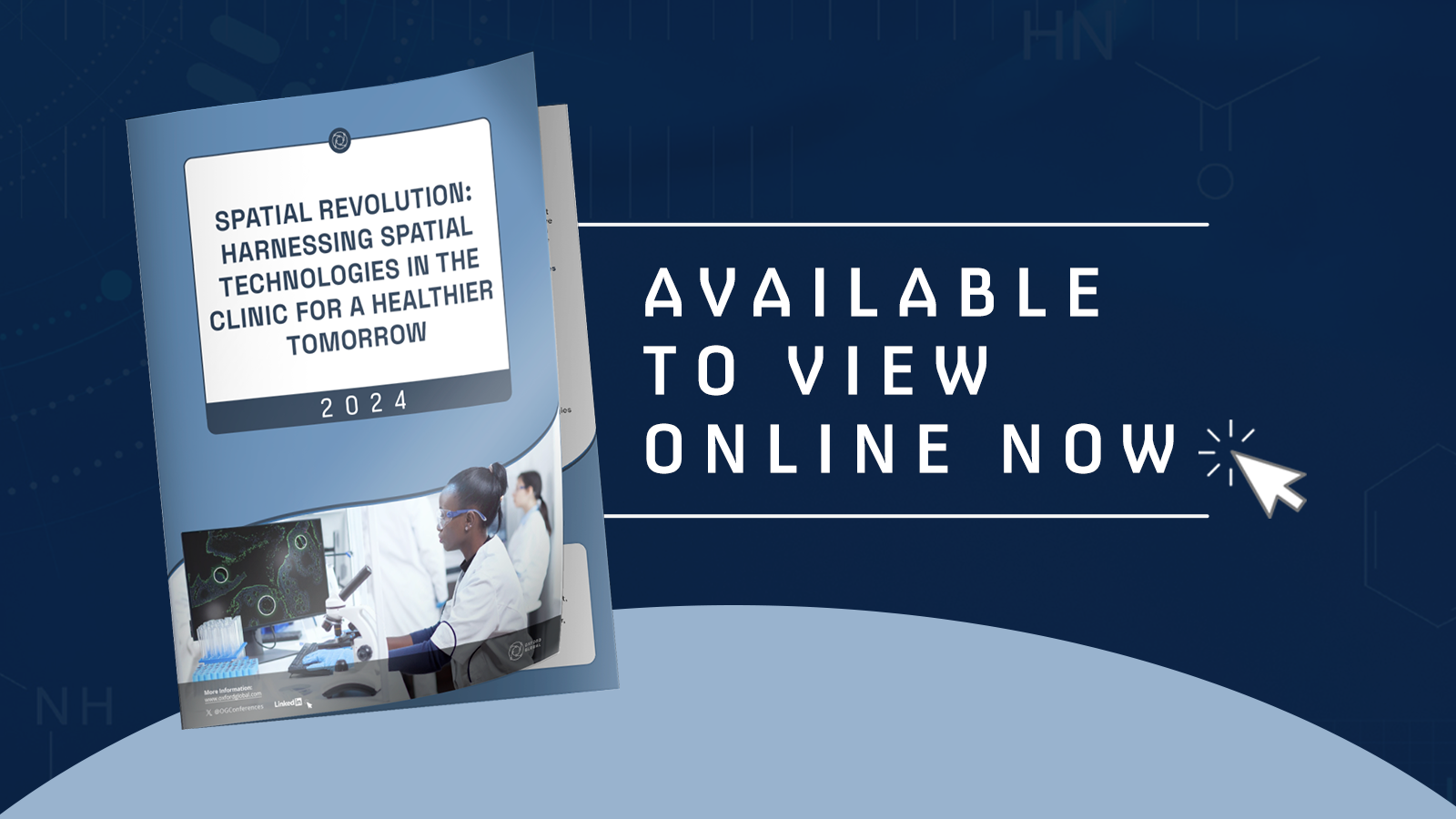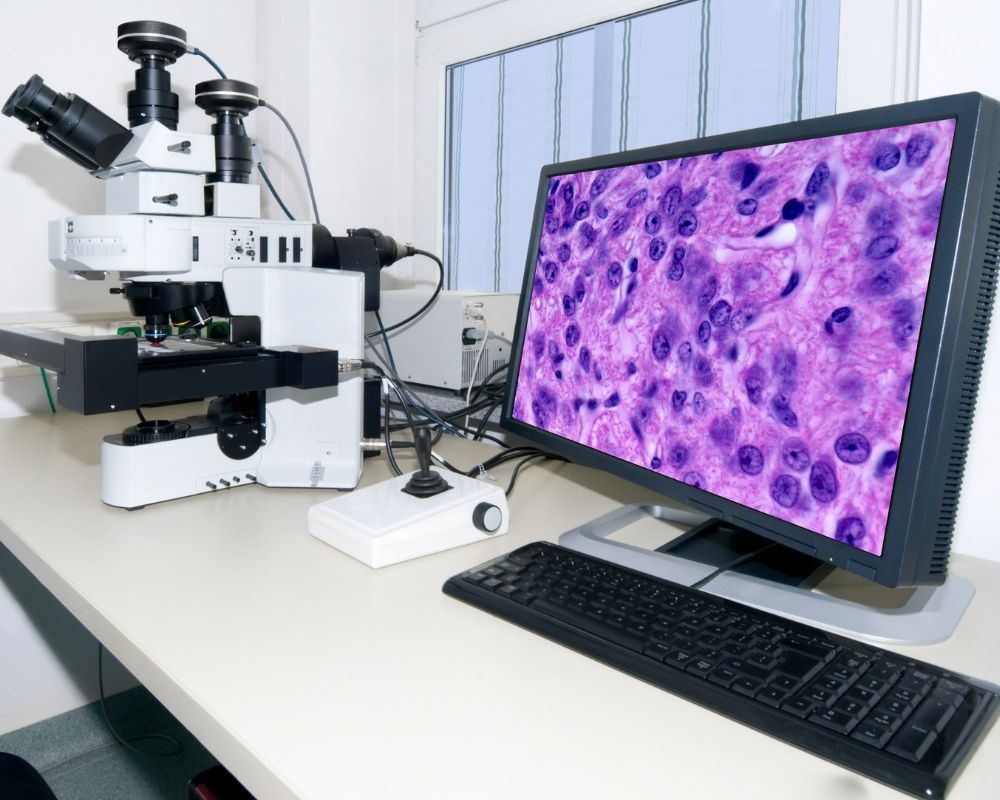Spatial Imaging in Clinical Research: Opportunities and Challenges Associated with Spatial Data

New advances in spatial imaging have enabled the analysis of diseases at a level of resolution that would have been unthinkable a few decades ago. Ongoing studies are continuously revealing new therapeutic targets and molecular biomarkers which may be used to assist in the diagnosis and treatment of certain illnesses. Spatial profiling also has huge potential in the identification of novel genes, the splicing of isoforms, and broader investigations into the world of non-coding RNA.
However, having high-resolution screening of subjects and samples is only useful if researchers and those in the industry have the means to efficiently interpret the large volumes of data generated. A panel at Oxford Global’s Spatial Biology US 2022 event discussed some of the current challenges associated with incorporating spatial imaging approaches into present or future studies.
Quantity and Quality of Spatial Imaging Data
A major topic of discussion in the imaging community at present is the use of genomics platforms to divulge information around clinical studies. One particular issue highlighted is assay validation. A certain amount of power is needed for imaging, as well as a certain statistical significance which is intimately related to power. If researchers discover a unique interaction, the question then becomes one of scaling up to validate and make a case for conducting a clinical study.
- Talking to Trento PI Martin Hanczyc about the intricacies of synthetic biology
- New transcriptomic approaches accompanying spatial profiling advances
- Overcoming challenges associated with low-level spatial analysis
The constraint here lies with the sampling approach inherent to this aspect of the field. Most genomic imaging is carried out on a very small number of samples at an incredibly high resolution. Scaling this up to be useful in a validatory context would require the researchers involved to wade through a vast amount of data to derive clinically-relevant conclusions that could be used to inform the next stage of a trial. While this requires something close to an infinite amount of data, it is theoretically possible. However, this would involve taking anywhere between 50 to 100 samples geospatially, which is no small undertaking.
Cellular-Based Interaction Models
The question around sequencing and sample size has also posed complications for those working with companies such as Pfizer. Associated groups work closely with the company’s research units, with activity centred around the preclinical and early exploratory discovery programme. In the context of genomics, some types of sequences are quite short-lived and transient in their lifetimes. This is where researchers believe there is an interest in understanding the activity and behaviour of biological features such as ligand pairing receptors.
In the context of early discovery, there are many other avenues for testing cellular interactions. However, there are some benefits in being able to look at some of the cellular-based interaction models. Subsequent transcriptomic profiles allow researchers to assess whether there is any type of corroboration, or an indication of the pathways that may be presented in tissues there. As such, the appropriate imaging approach is broadly subject to the nature of the clinical study in question.
Suitable Patient Population Size
Optimum population sample size for a spatial imaging-led study is broadly subject to the number of variables being investigated. For researchers investigating a host of different genes or variables, the power of the sequencing approach will depend upon the gene. Comparisons of CD3 signals in inflamed tissues compared to normal tissues may offer an extremely high signal in one and almost no signal in the other. As such, the more specimens that researchers can obtain for a sample, the better.
Teams at Pfizer often run a pilot study to support exploratory efforts around pathway discovery. Across these patient populations, the researchers conduct five biological patient representations, incorporating multiple orthogonal patient datasets. There is a significant differential in the suitable patient populations across humans and animal models.
If the model is preclinical and makes use of a small animal then the sample population can get away with being fairly small, particularly if the study is purely phenotypical. However, human samples require a broader population size. Given the multitude of spatial technologies available and the sheer amount of options for conducting clinical trials, the ideal cohort for a sample population will likely vary subject to the trial’s aims and constraints.
Translating Data from Spatial Imaging Studies into the Clinic
One of the areas of the field currently seeing a huge boom is digital twinning – capturing cellular state with a high fidelity microscopy model. Researchers are to capture cellular information in a high-fidelity model, which allows for substantial interpretation across a particular snapshot of the cell. Investigators and digital pathologists can then begin running ‘what if’ analysis, assessing how cells react to different conditions.
Another avenue for this approach may concern the correlation of public datasets with new or existing trial data to broaden out the total available dataset. This can go some way towards mitigating the often substantial costs involved in running a clinical trial, which is particularly helpful for companies operating on a lean budget.
As previously highlighted, spatial imaging technologies generate an incredible amount of information. However, it can be difficult to assess how much of that information will be usable when extrapolated across a healthcare context. One suggested avenue for smoothing this integration is getting both biopharma and the academic institutions to come together to discuss standardisation in a computational pipeline.
Want to keep up with the latest developments in spatial transcriptomics and imaging? Sign up to our Omics newsletter to receive a monthly summary of industry trends and new advances in the field straight to your inbox. If you’d like to know more about our upcoming Spatial Biology Europe conference, visit our event website to download an agenda and register your interest.







